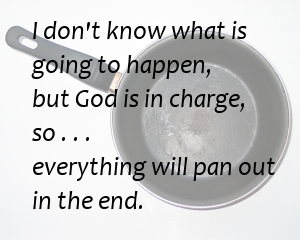Interview with Stephen King and Jerry Jenkins
http://writersdigest.com/article/writing-advice-from-stephen-king-and-j…
I found it very interesting. As the intro to the article says, “If this unique pairing seems unlikely, look closer. A conversation with the two yields both parallels and polarity—and candid insights as well as mutual respect.”

 Not long ago, a friend of mine was challenging me on eschatology. He believes that it is very important to embrace the pretribulational, premillennial position. I asked why this was so important. His answer was that we need to know which season we are in because the danger of false teachers will appear in the last days.
Not long ago, a friend of mine was challenging me on eschatology. He believes that it is very important to embrace the pretribulational, premillennial position. I asked why this was so important. His answer was that we need to know which season we are in because the danger of false teachers will appear in the last days.
Discussion